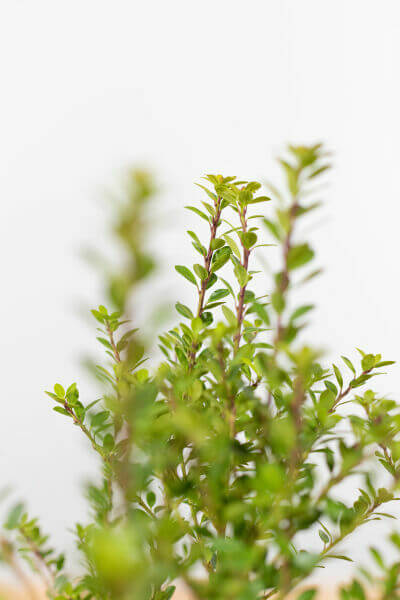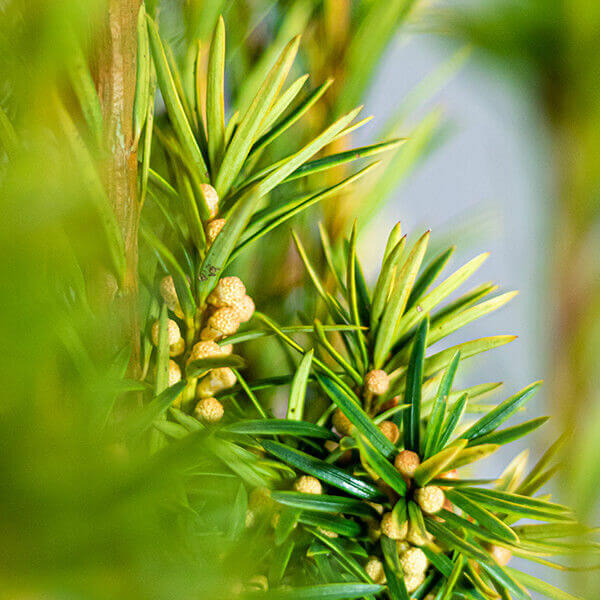Best Hedging Plants For Eco-friendly Gardens
Enhance your garden's allure with lavish hedge varieties such as Yew (Taxus), Thuja, Laurel, Photinia, and Bamboo, commemorated for their structural stability and environmental advantages.
Yew and Thuja offer evergreen protection and winter strength, while Laurel offers quick growth and broad, fragrant leaves.
Photinia includes seasonal charm with its dynamic red foliage, and Bamboo provides a low-maintenance, serene atmosphere.
These hedges improve air quality, reduce sound, and develop tranquil, private areas.
Proper planting, spacing, and maintenance make sure energetic growth and eco-friendly harmony.
Explore how these rich ranges can raise your garden's beauty and well-being.
Key Takeaways
Change Your Garden With Lush Hedge Ranges
- Select Yew for its dense, evergreen development and unparalleled longevity.
- Select Laurel for its quick development and broad leaves, ensuring quick privacy.
- Select Photinia for its dynamic seasonal foliage, which turns a striking dark red.
- Use Bamboo for a low-maintenance, winter-hardy hedge with visual appeal.
- Area plants 2-3 per meter and prune frequently for optimal growth and health.
Popular Hedge Plants
When changing a garden with lush hedge varieties, it's necessary to consider popular hedge plants such as Yew, Thuja, Laurel, and Photinia due to their distinct qualities and benefits.
Yew (Taxus) is highly esteemed for its longevity and dense, green growth, making it a prime choice for enduring landscapes.
Thuja is kept in mind for its evergreen foliage and robust winter season strength.
Photinia includes seasonal vibrancy with red leaves that darken with time, developing vibrant visual appeal.
Laurel uses quick development and fragrant, broad leaves, suitable for quick privacy.
Additionally, Bamboo is an exceptional option for atmosphere, providing a low-maintenance, winter-hardy choice that enhances the garden's visual with its classy, swaying walking sticks.
These selections cater to a range of horticultural requirements and preferences.
Benefits of Garden Hedges
Garden hedges provide a wide variety of benefits, making them a valuable addition to any landscape. These natural barriers are cost-efficient to execute and provide significant wind defense, improving air circulation and adding to noise reduction. The thick foliage of hedges like Thuja and Beech guarantees personal privacy by obstructing visibility, developing a remote and serene environment.
Hedges likewise play an important function in microclimate policy, supplying a stable environment that fosters plant development and minimizes temperature level changes. Their intricate leaf structures filter contaminants, improving air quality and adding to a much healthier garden ecosystem.
Furthermore, hedges excel in sound reduction, taking in and deflecting acoustic waves to lower ambient noise levels. This double performance of offering both visual and acoustic personal privacy enhances the general tranquility and aesthetic appeal of any garden.
Planting and Upkeep Tips
For a successful hedge, careful preparation of the planting area is important. Guarantee the soil has proper pH and drain to support strong root development.
Area the plants properly for the chosen types. Water the hedge frequently throughout its preliminary growth stage, adjusting as required with seasonal changes.
Carry out a methodical insect control and illness prevention method, using chemical or organic treatments when essential. Regularly inspect for aphids, mites, and fungal infections.
Apply mulch to keep wetness and reduce weeds. Seasonal pruning promotes dense growth and air circulation, important for plant health.
Following these guidelines will assist you cultivate a dynamic, well-maintained hedge that enhances the charm of your garden.
Spacing and Trimming Guidelines
Spacing and Trimming Standards
Appropriate spacing and cutting are crucial for cultivating healthy, aesthetically appealing hedges. Appropriate spacing makes sure each plant receives sufficient nutrients, light, and air flow.
Follow these standards for ideal hedge maintenance:
- Spacing: Position hedge plants 2-3 plants per meter to encourage robust growth.
- Pruning Strategies: Routine pruning is vital for preserving desired hedge height and shape. Cut brand-new growth in summer and cut down older wood during winter season.
- Seasonal Care: Adjust cutting schedules and approaches according to seasonal requirements to make sure plant health.
- Hedge Height: Routinely monitor and cut to maintain the preferred hedge height and attain uniform aesthetics.
Sticking to these steps will guarantee your hedge thrives, boosting both the appeal and functionality of your garden.
Selecting the Right Hedge
Choosing the Right Hedge
Picking the appropriate hedge includes examining factors such as fully grown height, foliage density, and environmental durability. Effective Additional resources hedge plant selection requires comprehending each types' growth qualities and site-specific flexibility.
For example, Yew (Taxus) offers outstanding durability and thick growth, while Thuja is notable for its winter durability. In addition, thinking about maintenance requirements is essential; fast-growing species like Laurel or Privet demand routine cutting, whereas low-maintenance alternatives like Bamboo or Ivy may be preferable for those seeking minimal upkeep.
Environmental elements such as soil type, light accessibility, and wetness conditions must likewise direct the choice procedure. This cautious method guarantees the picked hedges will flourish, offering both practical and visual advantages to the garden landscape.
Shipment and Planting Suggestions
To guarantee your hedge plants grow, they need to be provided by specialized carriers and planted quickly upon arrival.
Follow these important steps for effective planting:
- Soil Preparation: Enrich the soil with raw material to improve drain and nutrient content.
- Planting Depth: Produce a trench two times the width and equal to the depth of the root ball.
- Watering Strategies: Water thoroughly after planting, keeping the soil regularly moist but not filled.
- Mulching: Apply a layer of mulch to keep moisture and suppress weeds.
Client Assistance and Service
Offered the vital role of timely assistance in horticultural pursuits, our customer support team is offered six days a week through telephone, email, and social networks to provide professional suggestions and promptly resolve any issues. Their devotion to fast action times makes sure consumer satisfaction by resolving queries related to plant health, optimal planting methods, and maintenance schedules.

Within 24 hours
This comprehensive support group, strengthened by an excellent 9.3/ 10 consumer ranking, highlights our commitment to enhancing the gardening experience for every client.
Frequently Asked Questions
For How Long Does It Take for Hedge Plants to Establish?
Hedge plants normally require one to 3 years to end up being totally developed, with the specific period differing by types and growing conditions.
Efficient care during this crucial period is important for robust growth. Consistent watering, vigilant weed control, and proper fertilizer application are essential in promoting strong root advancement.
For instance, fast-growing species like Laurel may establish quicker, while slower-growing ranges such as Yew may take longer. Persistent maintenance accelerates the facility procedure, resulting in healthy and dense hedges.
What Are the Finest Hedge Plants for Privacy?
The concern of the finest hedge plants for personal privacy involves assessing evergreen and deciduous choices.
Evergreen hedges like Thuja, Laurel, and Cypress offer year-round coverage, making sure constant privacy.
In contrast, deciduous hedges such as Beech use seasonal personal privacy, shedding leaves in chillier months.
Key upkeep ideas for privacy hedges consist of regular trimming, fertilizing in spring, and correct spacing-- usually 2 to 3 plants per meter.
Additionally, constant watering and persistent weed removal are crucial for promoting healthy, thick growth.
Can Hedge Plants Bring In Wildlife to My Garden?
Yes, hedge plants can attract wildlife to your garden by providing vital benefits like shelter, food, and nesting websites, consequently enhancing regional biodiversity. For instance, yew, holly, and laurel are exceptional for attracting birds, while ivy supports a range of insects.
Nevertheless, it is necessary to keep in mind that there are some drawbacks, such as increased maintenance to handle pests and routine upkeep. Carefully picking and maintaining hedge ranges can assist balance these disadvantages and advantages, ultimately cultivating a dynamic and sustainable ecosystem in your garden.
Exist Any Blooming Hedge Plants Available?
Yes, there are flowering hedge plants available that can improve the appeal of your garden.
For example, Elaeagnus, also understood as Olive Willow, produces aromatic white flowers in the fall, including a touch of elegance.
Photinia, another popular option, showcases lively red leaves that mature into a rich green, developing a vibrant visual effect throughout the seasons.
To ensure these plants prosper, it's vital to practice proper pruning techniques and seasonal maintenance, such as cutting brand-new development in the summer season and cutting back in the winter.
These steps will assist keep the health and visual appeal of your blooming hedges.
How Do I Avoid Bugs in My Hedge Plants?
To avoid bugs in hedge plants, use natural bug control methods and maintain proper hedge care. Introduce beneficial insects like ladybugs, which prey on harmful pests, to create a balanced environment.
Frequently inspect your hedges for signs of problem and quickly remove any affected parts to avoid the spread. Make sure the health of your hedges by using balanced fertilizers and providing adequate water.
Utilize mulching to maintain soil wetness and appropriate spacing to reduce plant stress and promote robust development. These practices jointly help in reducing insect concerns and keeping a healthy hedge.
Conclusion
In essence, selecting the best hedge varieties such as Yew, Thuja, and Laurel can change any garden into a relaxing haven. These plants provide year-round plant, improve aesthetic appeal, and offer useful advantages like noise decrease and wind security.
Appropriate planting methods, accurate spacing, constant watering, and seasonal trimming are important for optimum growth.
Reliable delivery services and professional client assistance guarantee a seamless experience from purchase to planting, making it simpler than ever to raise your outdoor area.
Garden hedges provide a wide range of advantages, making them a valuable addition to any landscape. These natural barriers are cost-effective to carry out and offer substantial wind security, boosting air blood circulation and contributing to sound reduction. The dense foliage of hedges like Thuja and Beech ensures personal privacy by obstructing presence, creating a secluded and tranquil environment.

Pruning Methods: Regular pruning is essential for keeping preferred hedge height and shape. Trim brand-new growth in summer and cut back older wood throughout winter.
Comments on “Best Hedging Plants For Privacy Hedges”